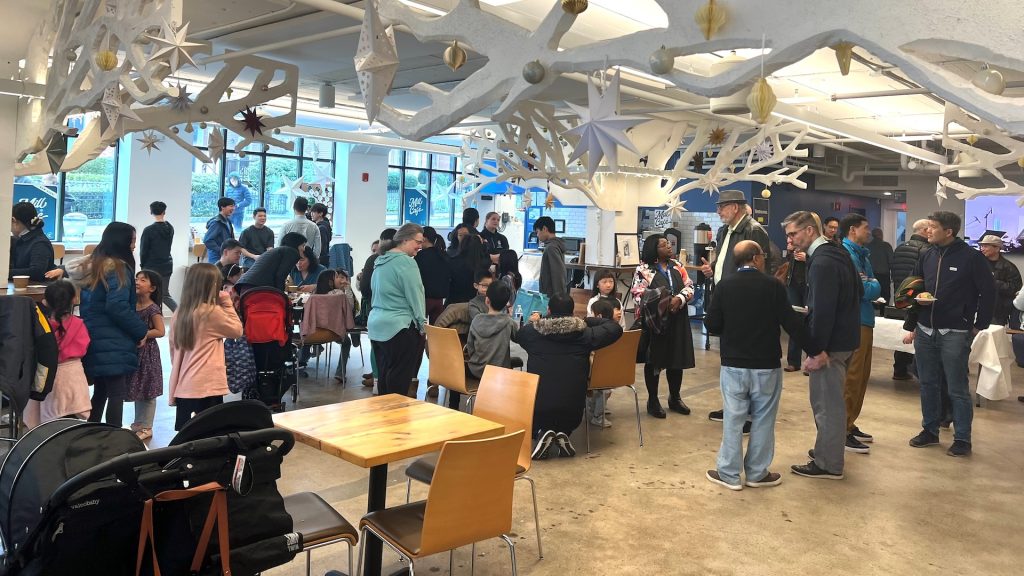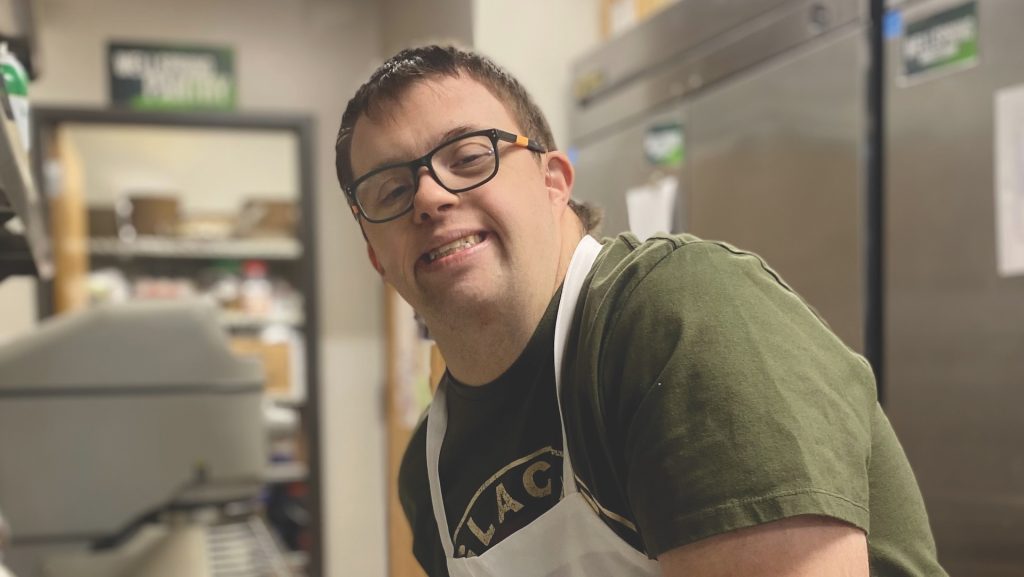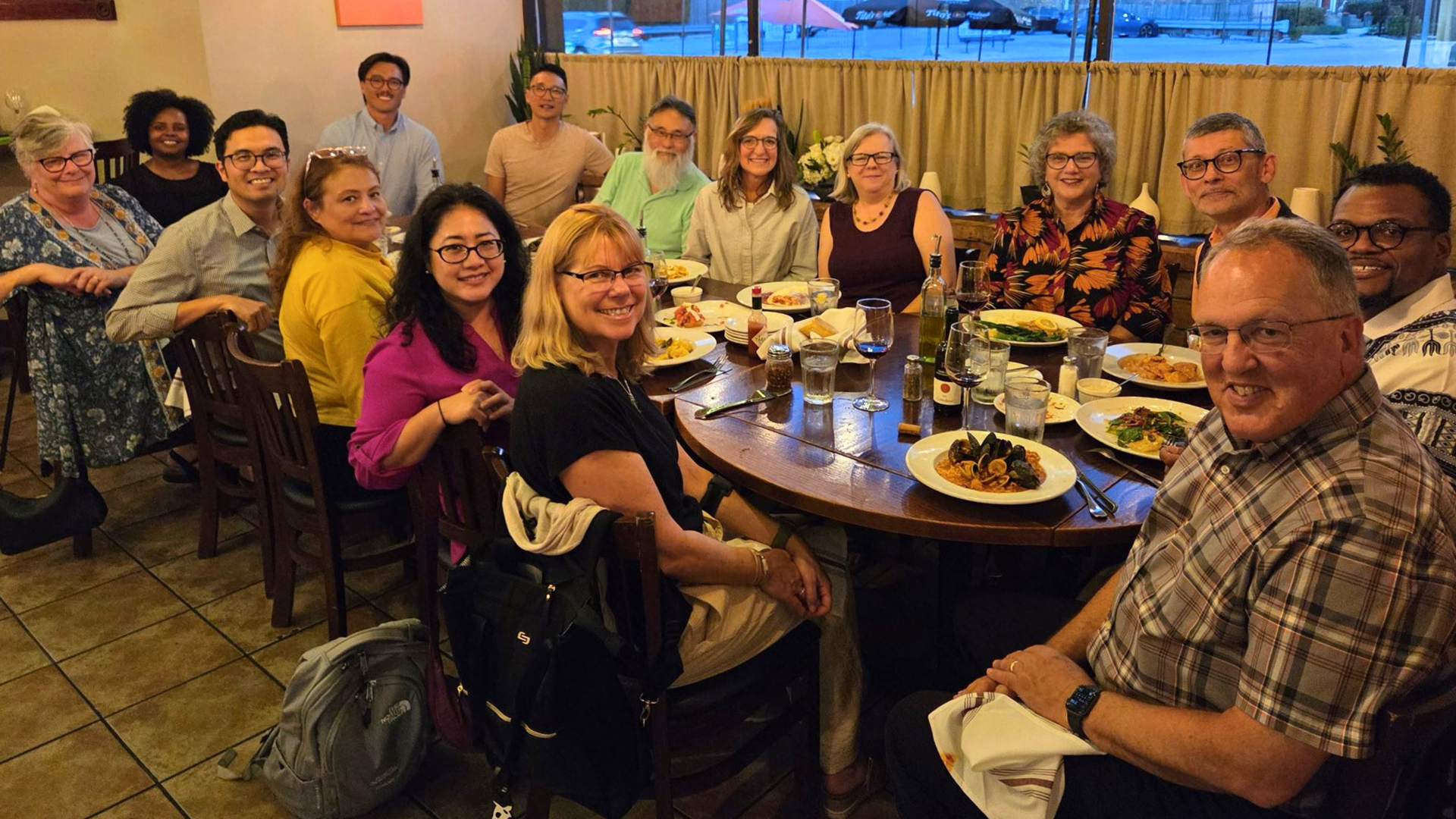Becoming a “Third Place” Space in Your Community
If your church closed tomorrow, would your community miss you?
This provocative question is one National Covenant Properties (NCP) often asks of churches who come to us for facility coaching. The challenge is for congregations to think of themselves as both a basecamp for people who are already a part of the church and a lighthouse to those in the community who need hope and healing.
According to the recent book Gone for Good?: Negotiating the Coming Wave of Church Property Transition, an estimated 100,000 churches could close in the next few decades. Through a series of essays, authors explore how churches and denominations can use their properties for missional advancement and community benefit.
In an interview with Religion News Service, Rev. Mark Elsdon, the editor of the book, was asked why it mattered if churches closed. “Church buildings play a central role in the social fabric and social infrastructure of communities in ways we don’t even necessarily think about until they’re not there.” He went on to say, “Besides the spiritual activities, the social activities that happen in church buildings are vital to the functioning of most communities. Even when churches are all but dead, their buildings are still often doing a ton of work.”
Gone for Good introduces the concept of the “halo effect,” a term coined by the organization Partners for Sacred Spaces. The halo effect attempts to capture the larger financial and social benefits of churches in the community. One study of urban churches determined that 93 percent of urban congregations open their doors to people in need, and 81 percent of the people served by a church were not a part of the congregation. The study estimated that the average congregation provided a financial impact of $1.7 million to their community.
A 2021 study of the halo effect on rural United Methodist churches in North Carolina said those congregations are also serving as community centers and contributing, on average, $735,000 of economic value to the local economy.
If you consider the potentially active hours of any church as being from 8 am to 10 pm each day, National Covenant Properties estimates that roughly 100 active hours are available each week. The question is, how many active hours is your church being used each week? And can you find ways to increase that number through programming or partnering with other organizations serving your community?
Pastor Rob Bryceson of The Gathering House, a Covenant congregation in Spokane, Washington, was wrestling with this question as his church examined how they could serve their members and community better. In evaluating their building, they realized it was not the best tool for the ministry they were feeling called to do. They decided to sell it and embark on a new ministry path.

The Gathering House in Spokane, Washington.
“If we were going to reinvest, we wanted something new. We decided the building was the number one asset of the church, and we wanted to use it differently than just creating another auditorium that sat empty all week waiting for Sunday morning,” Bryceson said. After a long discernment process and with assistance from the NCP Real Estate Services team, the church decided to purchase a 6,300-square-foot building to use as a coffee house, community hub, and place of worship on Sunday. Bryceson estimates that this new building “does ten times the ministry the old building did, and hundreds upon hundreds of lives are impacted by ministry in our new location.”
The Gathering House is providing a “third place space,” a term coined by sociologist Ray Oldenberg to describe places where people spend time between their home, which is their first place space, and their work, which is their second place space. Oldenberg sees “third place spaces” as locations where people can exchange ideas, have fun, and, most importantly, build relationships. With so many typically unused active hours, church buildings are a logical location to create third-place spaces for their communities and to provide opportunities to engage with people in ways they might not otherwise.
Highrock Church, a Covenant congregation in Arlington, Massachusetts, recently renovated a building to enlarge their worship and Christian education spaces. The new building allowed for a gathering space leading into the sanctuary, with large windows along the street side of the building. The church decided to use this space during the week to create the Mill Café, which is open Thursday through Saturday from 7:30 am to 4:30 pm. Serving coffee, pastries, waffles, and sandwiches, the Mill Café seeks to create a community that inspires courage, curiosity, and compassion.

Mill Café at Highrock Church in Arlington, Massachusetts.
On a recent Sunday, Drew Hunter, the executive director for Highrock Church, was handing out samples of delicious Mill Café waffles in between worship services and discussing the impact of the café. He says it is creating a way for people to enter church on their own terms. “I am having conversations with people I would never have had without Mill Café,” he said. “One woman came in to meet her daughter and granddaughter, and she was clearly not comfortable being in a church. But after getting a coffee and experiencing the hospitality of the staff, she began to ask questions about the church. In the end, she said her community needed more spaces like this.” The Mill Café also opens its doors for community-based organizations to meet and employs people with disabilities to staff the café.
Congregations wondering how to make their church building more active may choose to consider a couple of options. First, examine the assets your church already has to meet the needs in your community. Second, network with other local organizations to see how you can work together to perhaps share your facility.
A word of caution: while sharing your facility may provide revenue, your primary motivator should be missional. Sharing a facility is hard. The monetary return is rarely sufficient to cover the stress of having multiple users. You need to be confident about how your mission and the mission of your partners are furthered by sharing your facility. As well, sharing your facility with other organizations does have legal, tax, and insurance ramifications. The Real Estate Services team at NCP can help identify some of these issues and share examples of how other Covenant churches are expanding the use of their facilities.
The partnership between Castle Oaks Covenant Church and Wellspring Community in Castle Rock, Colorado, is one example of how sharing a facility can benefit both organizations. Wellspring provides education, enrichment, and business opportunities to adults with intellectual and developmental disabilities. They were teaching baking to participants in private homes before partnering with Castle Oaks, who built a commercial kitchen in their new facility to help Wellspring start a bakery. Over the last 13 years, the partnership has grown, and Wellspring now operates out of Castle Oaks and provides programs five days a week at the church.

Wellspring participant in the recently remodeled kitchen at Castle Oaks Covenant Church in Castle Rock, Colorado.
“Our relationship with Castle Oaks is by far Wellspring’s most significant community partnership,” says Nicole DeVries, executive director of Wellspring. “When we moved into Castle Oaks, we had 20 participants and four staff members. Today we have 120 participants along with 35 full- and part-time staff. Wellspring would not be the organization we are today if it were not for the way Castle Oaks took us in and gave us a safe place to nurture and grow our community. Our staff and participants know and love the Castle Oaks staff and consider them part of our community.”
Phil Vaughan, pastor of Castle Oaks, adds, “Castle Oaks Covenant Church has a long history of embodying the gospel values of humility, seeing the unseen, and placing a high importance on unconditional love. Our partnership with Wellspring has deepened and enriched these values in such significant ways. When I consider the duration of our relationship and the impact they have had on our ethos as a faith community, I am overwhelmed with gratitude for the way God has intertwined our stories.”
The relationship has been so mutually beneficial that Castle Oaks and Wellspring are currently working together on a building renovation project that will allow both organizations to expand their missional outreach.
Deciding to increase the number of hours your church building is active each week can have a big impact on the number of people you interact with. Gone for Good quotes a study that demonstrated that 89 percent of visits to urban churches were to take part in something other than worship. The Gathering House’s experience proves that to be true. “In 2023 we booked 462 meetings and events in our church space. That does not include the 250 coffee shop days or the 52 Sundays,” Bryceson said. Each of those meetings and interactions provides an opportunity to share ministry and the love of Jesus.
Elsdon said in his interview, “People are still interested in spiritual life. They are still interested in the divine and community, things that matter and have purpose.” It is just that how they choose to engage in their spiritual lives is different. Elsdon likens it to the shift from going to Blockbuster to rent movies to being able to stream those same movies without leaving the house. The church needs to consider how it adapts to the ways people are now seeking answers to their spiritual questions.
Several years ago Rev. Ray Johnson and Rev. Sherwood Carthen preached a joint sermon at a Covenant Annual Meeting where they made the case for churches to find ways to serve their community. The theme of their sermon was: “Good works lead to good will, which leads to an openness to the good news.” The Gathering House, the Mill Café, and Castle Oaks Covenant Church are finding ways to address the shift in how people engage the church. Our churches can be both a basecamp for the congregation and a lighthouse for those who are seeking connection and relationship in their community.














